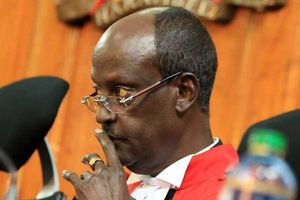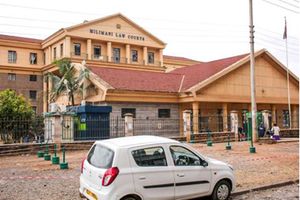Premium
Nithi crash: Shelved regulations on bus assembly would have saved lives

The Modern Coast bus which plunged 40 metres down the Nithi bridge in Tharaka Nithi County, killing 34 people.
As the families of the 35 people who died after their bus crashed into the notorious River Nithi on Sunday come to terms with the loss of their loved ones, concern is shifting to the lack of implementation of rules that would have made public service vehicles (PSVs) safer in case of an accident.
The Modern Coast bus that was headed to Mombasa from Meru was almost torn into two on impact, after the driver lost control of the vehicle, which swerved off the bridge.
While it’s still too early to say what the cause of the accident was or whether the near disintegration of the vehicle’s body should be of concern, a look at recent accidents involving long distance PSVs shows a similar trend.
Long distance travel 14-seater matatus especially, commonly known as boxes, are continuously getting ripped apart on impact whenever they are involved in accidents. The reckless driving associated with PSVs aside, the quality of the bodies of the vehicles is wanting.
On Monday, barely 24 hours after the Nithi accident, two people, including the driver of a 14-seater matatu, died after their vehicle rammed a lorry at Makuyu, Muranga. The matatu’s front section was completely torn apart on impact, causing the driver to be catapulted to the ground.
Such scenarios have become commonplace in the past four years, as operators and the government engage in a tag-of-war on implementing new body building standards.
Kenya requires every manufactured product to have a Kenya Bureau of Standards (Kebs) Standard Mark of Quality. Passenger vehicles, however, are among the few products that come from the factory or the port, straight into service, after a simple inspection and after acquiring the necessary licences.
“Whatever kind of body building that would have been done on the Modern Coast bus, that impact was huge. You can’t blame the structure of the bus for that, considering it rolled from the top of a bridge,” Matatu Owners Association (MOA) chairman Simon Kimutai told the Nation yesterday.
“The better thing to address are safety issues. If the vehicle had bad brakes as we are hearing, then someone at the company, either supervisors or mechanics, slept on the job, and they should be answerable.”
Since January, 718 passengers and drivers have died in road accidents across the country. This number is 28 per cent more than the 551 who had died by this time last year.
A huge chunk of the passengers and drivers who die in road accidents do so in PSVs.
Things could have been different had the government fully implemented laws that were to dictate how the bodies of PSVs are built. The regulations, however, are gathering dust on a shelf due to politics.
Also known as KS372:2014 when they were first conceptualised in 2014 before being renamed KS372:2018 in 2018, and then shelved altogether, the regulations created by Kebs were touted as the panacea for mass casualties in PSV accidents.
“Bus accidents are fatal because of the poor construction of buses in Kenya,” Mr Gerald Wangai, an engineer who is the NTSA director of motor vehicle inspection, said.
The plan was to ensure uniformity of all passenger vehicles in terms of fabrication as a safety measure on the roads. PSVs were supposed to be classified into six, depending on their length and maximum number of passengers allowed.
Micro buses were supposed to be up to seven metres long, mini buses up to eight metres, midi buses (between eight metres and 10.8m), large buses (10.5 metres), single articulated buses (18m to 26m) and then double decker buses that would be exclusively for urban use.
The micro buses were supposed to carry up to 14 passengers, mini buses (15 to 25 passengers), midi buses (25 to 40), large buses (40 to 53), while large articulated buses were to carry between 53 and 60 passengers.
Additionally, no buses were going to be allowed to have roof racks for luggage, and none of them was going to have a floor to roof height of less than 1.7 metres for 25-33 seaters, or less than 1.8 metres for the large ones.
All the PSVs were also supposed to be fitted with anti-rolling bars during fabrication. The metal bars fixed alongside the body from the inside on the front, sides, back and edges of the vehicle ensure that in case of an accident, the bus maintains its shape, to keep passengers who have their safety belts on safe from major injuries.
“Every public service passenger vehicle shall be provided with hand-rails and handholds which are of adequate strength and so designed and installed as to present no risk of injury to passengers,” say the regulations.
Seats, too, would have not only been made more spacious—with a width of not less than 40cm and a leg room of 60cm—but they would have been safer too.
“The seats shall be firmly bolted on the floor steel framework and not on floor sheets. The bolting shall be done from underneath the floor of the passenger cabin so that no bolts, nuts or threads endanger passengers,” say the rules.
Yesterday, NTSA Director-General George Njau did not respond to our questions on why the agency does not want to tackle the matter head-on and bring safety to the roads once and for all.
Instead, the authority sent us a statement on the ongoing probe into the Nithi accident.
“The multi-agency investigation team is set to receive and discuss the preliminary crash report this week,” NTSA Deputy Director of Communications Dido Guyatu said.




